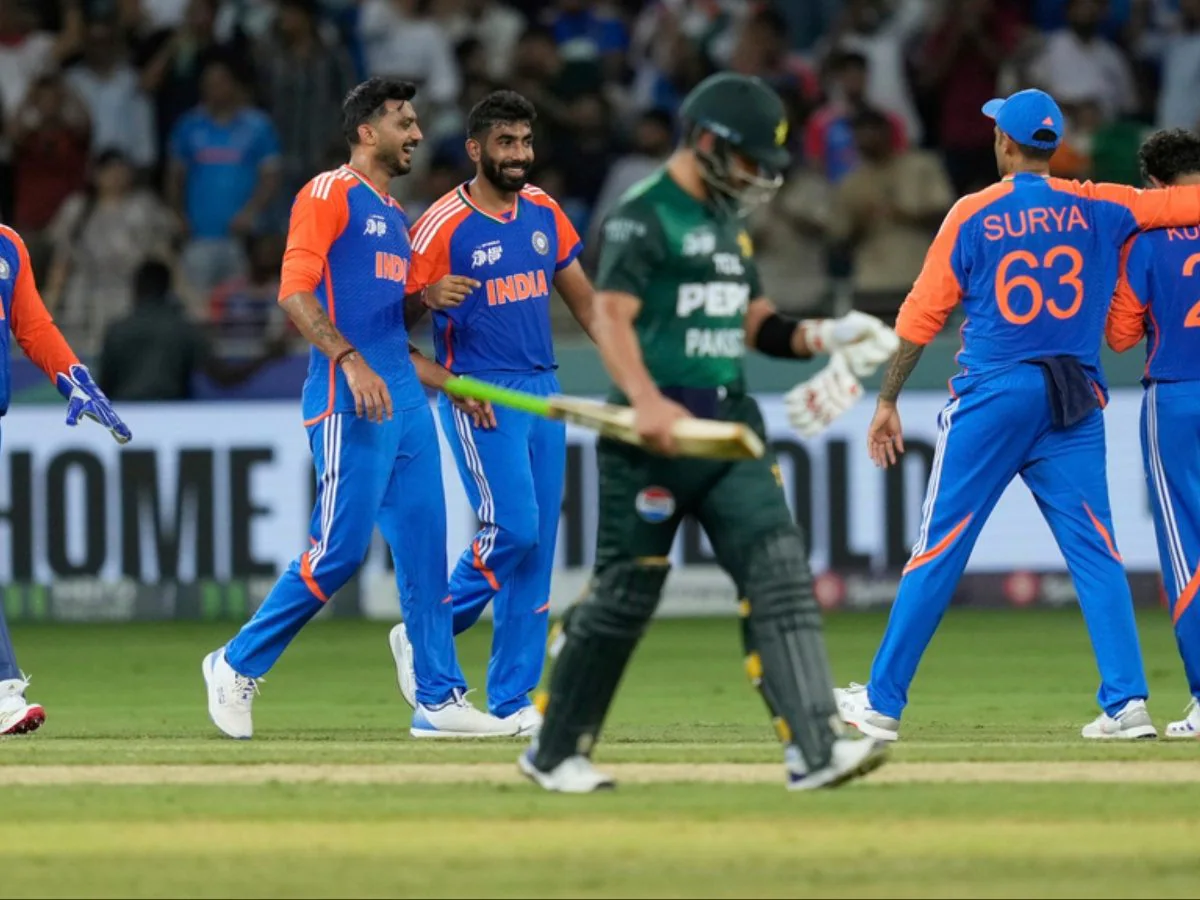Opening over swing and pressure
Pakistan 62-4 in Powerplay Against India set the tone for a tense, tactical contest where early wickets reshaped the batting approach and field settings within minutes. Pakistan 62-4 in Powerplay Against India also meant the dugout leaned heavily on middle order composure rather than a typical power hitting surge. The new ball moved, lines were tight, and India’s quicks forced plays outside off that created chances.
Key wickets and turning points
The early dismissals changed intent. Pakistan 62-4 in Powerplay Against India reflected both disciplined bowling and aggressive fields at point and slip. Moreover, a sharp catch and a nip backer that trapped a set batter compounded the pressure. As a result, strike rotation became the priority over boundary hunting through the ring.
Middle-order recalibration
With Pakistan 62-4 in Powerplay Against India, the middle order had to rebuild through singles, soft hands, and smart angles. Quick two’s into the pockets steadied nerves while the dressing room signaled patience. In addition, batting tempo shifted to 4–6 runs per over with minimal risk shots until the 10 to 12 over window.
Bowling tactics that worked
Fuller lengths early, then hard length into the pitch this sequence delivered returns. Pakistan 62-4 in Powerplay Against India underscored how scrambled seam and tight fifth stump corridors can restrict scoring. Furthermore, a surprise bouncer forced a miscued pull that turned the screws during the ninth over.
Field placements and pressure
Captains often win passages with proactive fields. Pakistan 62-4 in Powerplay Against India saw a ring heavy setup with a catching cover and a short mid wicket to choke singles. Then, as the ball softened, the captain pushed square riders deeper, protecting the cut and pull while tempting drives on a used strip.
Pitch behavior and conditions
There was both grass cover and early moisture. Pakistan 62-4 in Powerplay Against India reflected how morning humidity and a fresh surface reward discipline. Later, as the sun broke through, the surface offered truer bounce, hinting that consolidation through the middle overs could launch a back-half recovery.
Counterpunch options from Pakistan
Stability first, then selective aggression. With Pakistan 62-4 in Powerplay Against India, the blueprint was clear: rebuild to the 12th, cash in from 13–16, and finish strong at the death. Targeting the fifth bowler, sweeping the leg-side matchups, and using depth of crease against cross-seam were on the table.
India’s follow-up plan
Having Pakistan 62-4 in Powerplay Against India, India could rotate quicks in short bursts and bring spin to test new partnerships. Subsequently, fielders guarded the square boundaries to protect the most productive scoring zones while slips came out for cutters and cross-seam variations.
Matchups and micro-battles
Right-handers faced a steady stream of wobble seam away, while left-handers saw the angle across with a square gully waiting. Even so, Pakistan 62-4 in Powerplay Against India did not end the fight; it merely framed an innings that demanded patience, pairing, and clarity of roles. The game pivoted into a chess match over the next ten overs.
What the score means for par
On this surface, anything between 155 and 175 looked competitive if partnerships held. Pakistan Powerplay Against India suggested a par adjustment five to ten runs lower unless the lower middle order found rhythm. Because the outfield ran quick, timing through gaps still paid well when risk was managed.
Death-overs calculus
Yorkers, slower-ball dip, and wide lines would define the final act. Pakistan Powerplay Against India meant wickets in hand became the decisive KPI. Consequently, batting units often stack hitters at seven and eight to preserve a late surge even after a tough start.
Momentum and psychology
Momentum is fragile in T20 cricket. Pakistan Powerplay Against India could energize India’s bowlers, but a 40–50 run stand would flip the mood instantly. Therefore, calm heads and clear matchups mattered more than raw strike rate in the next phase.
Live takeaways
-
Dot ball pressure created the wickets; discipline beat desperation.
-
Middle order strike rotation became the rebuild engine after early strikes.
-
Spin through the middle overs aimed to exploit new partnerships and scoreboard strain.
-
Death bowling plans hinged on yorker execution and wide line variations.
What to watch next
-
Can Pakistan convert ones into twos to keep the board moving without risk?
-
Will India hold back an over from a strike quick for the 17th or 19th?
-
How will left-right pairs disrupt lines and fields as the ball softens?
Final word
Pakistan 62 to 4 in Powerplay framed a gripping, tactical contest defined by early movement, sharp catching, and disciplined fields. If the middle order settles and carries to the 16th over, a late launch could still post a defendable total despite the initial setbacks.

















